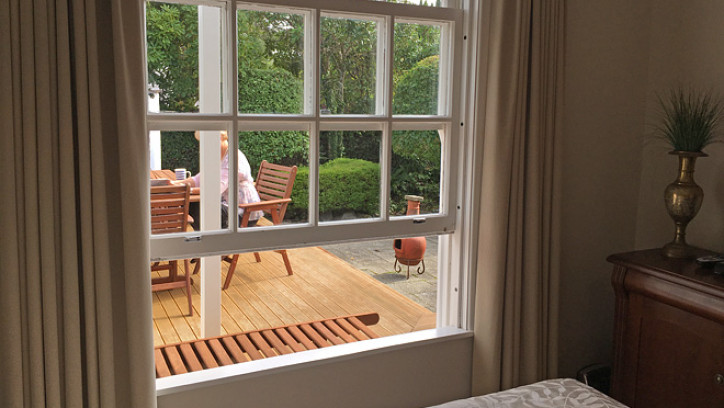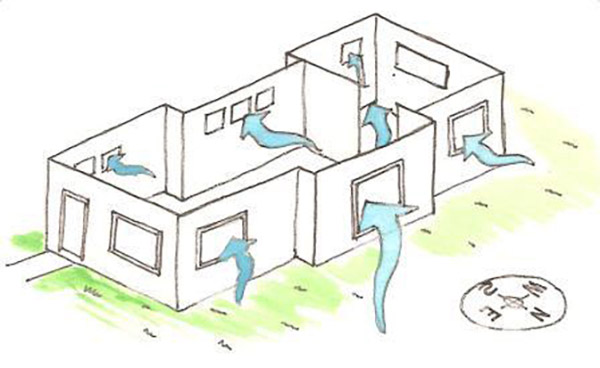Passive ventilation
Last updated: 9 August 2023

Non-mechanical methods of bringing fresh air into your home and letting stale air out.
How passive ventilation works
Passive ventilation uses doors, windows, vents, louvres and other openings to bring fresh air into your home and let stale air out. The size and placement of these openings can be used to guide air into and through your home.
Where cooling is required, windows or other openings up high or on upper levels can be opened to let warm air escape. In winter, well-designed passive ventilation refreshes the air in your home without creating draughts or letting out too much heat.
Passive ventilation works best if air has clear, uninterrupted pathways through your home. You can maximise air flow by designing open plan areas or having high vents or other openings between rooms. Ensure that you have openable windows well distributed on each side of your house to make the most of microclimate breezes.
If your home is designed for passive ventilation, all you'll need to do is open and close windows, doors or other vents as needed to reduce the temperature and improve the quality of the air you're breathing.

To encourage cool air flow, you'll need larger windows opening to the breeze on one side and smaller, higher windows on the opposite walls.
Options
The appropriate ventilation options for your home will depend on the climate and microclimate of the area you live in, and what prevailing breezes there are. As a rule of thumb, the area of windows, doors and other vents that can be opened up to the outside should be at least 5 per cent of the floor area for each living space – and more for areas with high use or moisture loads, such as kitchens, bathrooms, living rooms or bedrooms.
Some points to consider:
- For passive ventilation to be effective, a house needs to be ventilated several times each day for a few minutes.
- Windows or other openings on opposite sides of your home will help draw air through.
- Openable skylights in the roof or on upper floors will allow air to escape as heat rises.
- Built-in trickle vents, louvres, slots and gaps in door or window framing can provide low-level ventilation over long periods without creating security risks.
- Different types of windows can be used to guide air into your home – for example, side-opening windows are better at catching breezes and pulling them into the house, than awning-opening windows.
- If your home is on more than one level, make sure there are openable windows or doors on each level. As hot air rises, high windows that can be left open on upper floors can be a good way of ventilating your house during summer.
- Fly screens and security stays installed on windows mean they can be left open at night, or when you're out during the day, to help the house keep cool in summer.
- Ensure cross-ventilation under your suspended floor to control dampness.
Glazing and glass options has more information about window design.
Background air leakage
Some features will provide low-level background movement of air between your home's interior and exterior. This is often called uncontrolled air infiltration, and can cause draughts and heat loss in winter. For example:
- timber joinery around windows and doors
- flues and chimneys
- recessed ceiling and light fittings
- extractor fans without backdraught shutters.
It is better to plan good ventilation together with a well-insulated, draught-proofed house, than rely on leaks and draughts which you cannot control when you need to and won't necessarily ventilate the right places.